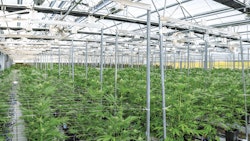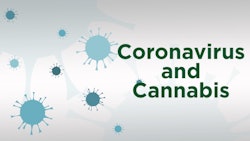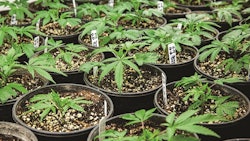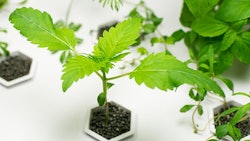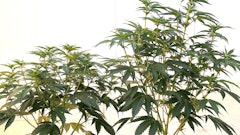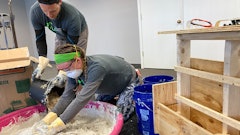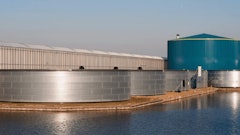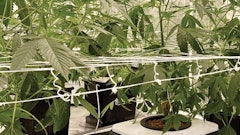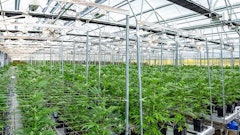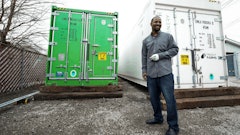.jpg?auto=format%2Ccompress&q=70&w=400)
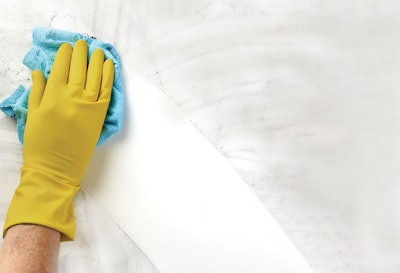
Pathogens lurking in hydroponic systems aren’t always obvious—until they adversely affect your grow. Regular and thorough sterilization of hydroponic components helps maintain an optimal growing environment. That includes cleaning those hard-to-reach crannies that are typically overlooked. Cannabis Business Times spoke with three hydroponic growers to learn how they keep their hydroponic systems at the peak of deep clean.
Ian Andrews, Director of Production Operations, Wellness Connection of Maine
As director of production operations for Wellness Connection of Maine, Andrews oversees two neighboring production facilities that total 22,000 square feet of cultivation. Both produce for the company’s four dispensaries. He models his sterilization approach after traditional agriculture, and he emphasizes prevention.
“A big part of growing successfully is forethought and ensuring that everything is well thought-out, well planned, and then well executed,” he says.
Andrews offers the following hydroponic sterilization-related tips:
1. Start with a good design. To prevent problems before they start, Andrews recommends using materials and fittings that block light and are completely sealed. “Never use clear irrigation tubing; it allows light into the line and allows for algae growth,” he says.
2. Design your system for easy cleaning. “If it’s a pain to take apart, your cultivation team will be tempted to cut corners,” Andrews says. “Run anything that you can in straight lines, without too many elbows or too many fittings. [That’s] just more you need to take apart and clean, and places where you can potentially get buildup in your lines.”
3. Try to keep your systems and manufacturers uniform. “Multiple systems and manufacturers add time and complexity, increasing the possibility of some aspect of sterilization to be missed,” he says. “It is very important to keep it uniform.”
4. Give extra attention to plant-touching components. “Things that actually come in contact with the plant or the roots or the root ball—the drippers or the spaghetti lines that go to the drippers or the pots themselves that the plants are in—those are the things that we definitely take apart and sterilize in between each crop cycle,” Andrews says. That process includes a trip through an industrial dishwasher. “We’re actually bringing those [components] up to temperatures where we’re killing off microbial growth,” he says.
5. Ensure your team understands sterilization’s importance. “Create a standard, comprehensive sterilization procedure and train your team to follow it every time,” Andrews says. “Make sure they all understand the ‘why’ behind each aspect of your procedure.”
6. Never take shortcuts in the sterilization process. “All too often, growers are so focused on harvesting and then refilling the room ASAP with the next crop to avoid any unnecessary downtime, and thus the sterilization of key equipment is overlooked,” Andrews says. “It’s essential that this step is included in the turnover of the room, otherwise the time saved will pale in comparison to the weeks of growing lost.”
_fmt.png?auto=format%2Ccompress&fit=max&q=70&w=400)
Jesse Miller, Cultivation Manager, Giving Tree Dispensary – Arizona
As cultivation manager for Arizona-based Giving Tree Dispensary, Miller’s background in plant pathology influences his approach to hydroponic sterilization and the cultivation operation’s 5,000 square feet of canopy. Miller emphasizes preventing circumstances that can lead to pathogen problems.
Nutrient reservoirs are constant priorities. “Keeping that reservoir clean is extremely important because that’s the source to all of your plants,” Miller says. “During harvest week, there are no plants in the rooms for a few days and we do a deep clean to start everything fresh.”
Miller offers these sterilization-related tips:
7. Keep your nutrient solution moving. “If it becomes stagnant, you can have algae and bacteria and fungi sitting in there, growing,” Miller warns. “Having it circulated with a circulator pump and having it aerated—adding air stones and a bubbler—is very important.”
8.Use a chiller system to control nutrient temperature. “Hook a [chiller system] up to your circulator pump so that you’re maintaining a perfect temperature for the solution. If it’s too warm, you can have certain organisms growing that you don’t want,” Miller says.

9. Avoid using oils in irrigation lines. Miller says oils can lead to blockage and harmful growth in irrigation lines. “Sometimes people will irrigate with oil in order to get rid of root aphids or something like that,” he explains. “I would recommend never to run anything like that through an irrigation system, because it’s very hard to get out.”
10. Breakdown fertilizer buildup with an acid flush. Flushing lines with a pH-down, phosphoric acid solution (near 3 pH) to break down salts is part of Miller’s post-harvest deep clean, but he cautions not to use a solution with a lower pH than that. He once tried a solution below 2 pH, and let it soak in lines overnight. “When I came in the next day, it had corroded all of my plastic manifolds, so when I turned the irrigation on, it basically exploded,” he says. “That would be something not to do.”
11. Don’t recycle irrigation water to other growing zones. “If you’re recirculating water and using it on different zones of your growing operation, you could be recycling and transferring diseases to other zones of the facility,” Miller says. He keeps every room on its own irrigation system.
12. Treat recirculating water with a UV sterilizer. “When you’re recirculating your reservoir, you can have that water constantly transferring through a membrane with UV light. The light is breaking down the cells of all types of organisms that could infect your plants. That is really effective with killing fungi and bacteria,” Miller says; however, he notes, “one challenge is that it can also break down elements in your fertilizer recipe—iron specifically.” Micro-dosing supplemental nutrients to offset deficiencies may be necessary.
13. Don’t forget your tank. “Every once in a while, someone needs to get inside the tank and do a deep clean. Even if you have aeration, there’s a good chance you’re still going to have some sort of residue buildup on the walls of the tank,” Miller says. “We use a couple of different things: hydrogen peroxide and then a product called Physan 20, which is an algaecide, fungicide, bactericide and viricide.”
14. After cleansing, do a thorough flush and water check. Miller recommends a thorough flush with clean water after using any cleansing product in your system. “Make sure you collect that water and that you’re checking the quality of the water coming out of the lines before you start to irrigate the plants,” he says.
Mike Meyer, Head of Cultivation, Lucy Sky Cannabis Boutique – Colorado
As head of cultivation at Colorado-based Lucy Sky Cannabis Boutique, Meyer oversees 50,000 square feet of cultivation, which supplies Lucy Sky’s four dispensaries and wholesale customers across the state. With approximately 10,000 plants on hand at any one time, Meyer stresses that strict sterilization procedures are essential to success.
“Just because it’s not visible to us doesn’t mean that we don’t have different types of microbes and different types of pathogens and molds and mildews. So we have a list of things that we do every time—after we harvest the room, then the post-harvest room cleanup, and then going forward into the growing cycle itself, all the way through,” he explains.
The following steps top Meyer’s checklist:
15. Sterilize irrigation lines. Meyer recommends two products for sterilizing irrigation lines between crops. “The one that I use is ZeroTol 2.0. It’s a BioSafe product that is hydrogen dioxide and peracetic acid,” he says. “The one that would be used more commonly and that is also safe is hydrogen peroxide (H2O2), preferably a commercial use that has a higher concentration than what you would normally buy in the grocery store.”
16. Perform a weekly root flush. Meyer recommends a weekly root zone flush. “In terms of sterilization, it’s imperative that you clean up your lines so that you don’t have any types of buildup of algae, biofilms or waterborne pathogens,” he says. By adding ZeroTol to the mix, “you’re able to kill any potential pathogens that may be present,” he adds.
17. Always put safety first. Meyer emphasizes employee safety and utilizing proper safety equipment as sterilization priorities: “Ultimately, it’s healthy people, healthy plants. We don’t want anybody to get hurt.” Standard operating procedures for sterilization include step-by-step protocols for every procedure, including protective equipment. “It’s important that we have proper eye protection, proper respiratory care and proper coverage for your skin, arms, hands,” he says.
18. Don’t become complacent. “It’s easy to become complacent [with sterilization] and think, ‘I’m not seeing any detrimental effects. I can probably skip this that one time.’ That’s where problems start happening. And once you have a problem, it takes twice as much effort to get rid of it,” Meyer says. “Sterilization is imperative. ... It’s really important that you have a tight protocol and that you have a strict regimen.”








